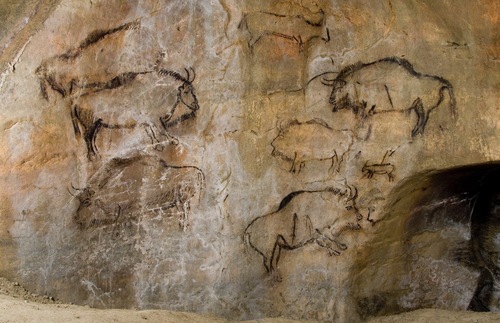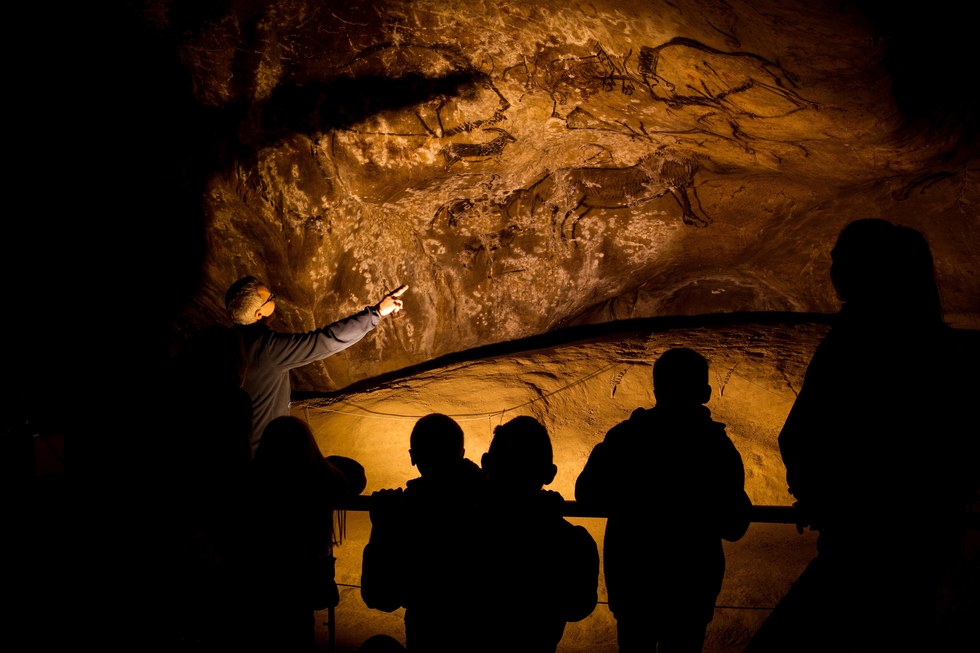The Grotte de Niaux (Niaux Cave) is one of the few caves with prehistoric art that's still open to the public in France. A guided tour through Niaux feels like an adventure from another time, perfect for thrill-seekers, history buffs, art and nature lovers alike.
Found at 678 meters in the northern foothills of the Pyrenees mountains (there's a road from the village of Tarascon-sur-Ariège), Niaux Cave is about 24 km (15 miles) south of Foix, an ancient town home to a medieval castle and Dr. Jean Clottes, one of the world’s preeminent prehistorians in cave drawings.
The central attraction at Niaux Cave is the Salon Noir (Black Hall), the location of the main gallery of drawings of bison, ibex, horses, and abstract symbols of lines and dots. Thought to be by the Magdalenian people of the Upper Paleolithic period (17,000 to 11,000 years ago), the art has been estimated to about 14,000 years old by radiocarbon dating.
On the easy .8km walk (1.6 km roundtrip) from the cave's mouth to the Salon in its belly, illuminated by flashlights, you’ll pass still ponds, dripping stalactites, stalagmites, and graffiti from 17th-century tourists. In other parts of the cave, off-limits to the public, prehistoric footprints of both adults and children and torch fragments have been found. Walking or athletic shoes are highly recommended, as is warm clothing—the cave is 12°C (54°F) all year. The walk isn't ideal for people with limited mobility since the cave floor can be uneven, wet, and, at times, steep; there are also three or four points where an adult must crouch to traverse low passages, but visitors are always on their feet and need no specialized gear.
A steep underground hill opens up to the Salon Noir, where the drawings in black (charcoal) and red (iron oxide) pigment await on the tall sloped walls. Here, guides ask visitors to turn off their lights and direct their own specialized lanterns on the drawings, recreating the spectacular effect of the torchlight environment the original artists worked in.
The images of bison, ibex, and horse are startlingly sophisticated, similar to the line drawings of Picasso, and envelop the viewer in an air of mystery. Unlike other cave art, the Niaux art does not depict hunting or any insight into daily life—these animals are thought to have been rendered as ritualistic icons.

Photo courtesy of Sites Touristiques Ariège
Adding to the puzzle, only ibex were prehistorically found in this region of France and the people who created these images didn't even live in the cave. Yet the drawings are so deep within the earth, and sometimes so well-hidden in tight spaces, that it’s unclear if anyone other than the artists were meant to see them. The abstract line-and-dot symbols that appear at Niaux have also been found in caves on the south side of the Pyrenees mountain range in Spain.

Photo courtesy of Sites Touristiques Ariège
Adding to the puzzle, only ibex were prehistorically found in this region of France and the people who created these images didn't even live in the cave. Yet the drawings are so deep within the earth, and sometimes so well-hidden in tight spaces, that it’s unclear if anyone other than the artists were meant to see them. The abstract line-and-dot symbols that appear at Niaux have also been found in caves on the south side of the Pyrenees mountain range in Spain.
The drawings are not the only incredible aspect of the Salon Noir. Before heading back, the guide will shut off all lights and demonstrate the chamber’s astounding acoustics.
To enter the Niaux Cave, you must reserve a guided tour online; (2018: €12 adults, €8 children under 17). The cave is open year-round except for a few scattered weeks in the winter months, but English tours are only available in the summer, from May through September. Arrive at least 15 minutes early to pause at the magnificent and mammoth steel entrance designed by Italian architect Massimiliano Fuksas and read a thorough history of the caves—and of previous visitors like you.






